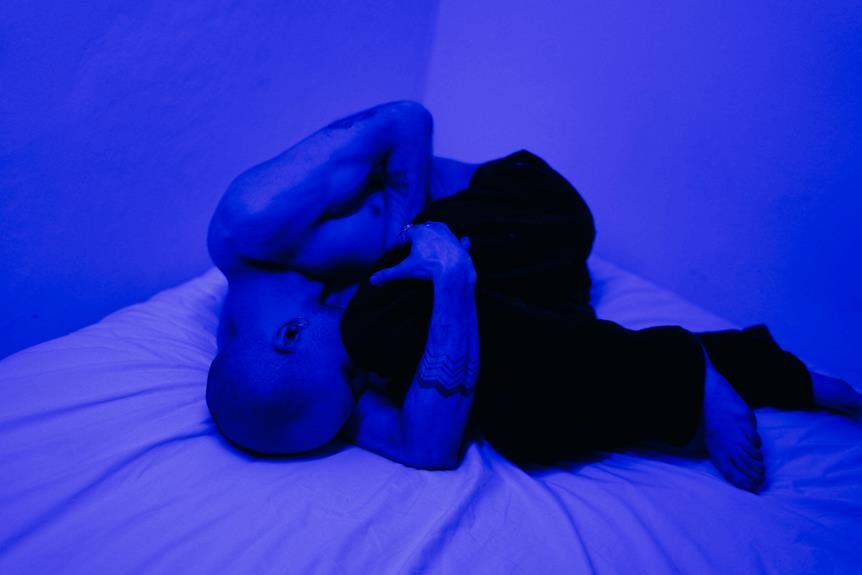Mind-Body Techniques for Managing Chronic Back Pain in Your 50s
Imagine finding relief from chronic back pain in your 50s through a holistic approach that combines the power of your mind and body.
By exploring mindfulness practices, yoga postures, guided imagery, relaxation exercises, and specialized breathing techniques, you can discover a way to manage your discomfort effectively.
These techniques not only offer physical relief but also address the mental and emotional aspects of living with persistent pain.
As you navigate through this journey of self-discovery and healing, you may uncover a newfound sense of empowerment and resilience that could transform your experience of managing chronic back pain.
Benefits of Mindfulness Practice
To manage chronic back pain effectively in your 50s, incorporating mindfulness practice into your daily routine can provide significant benefits. Mindfulness involves being present in the moment, acknowledging your thoughts and feelings without judgment. This practice can help you develop a greater awareness of your body and how it responds to pain, leading to a better understanding of your triggers and stressors.
By incorporating mindfulness into your routine, you can learn to manage stress more effectively. Stress is known to exacerbate back pain, so by reducing stress through mindfulness, you may experience a decrease in the intensity and frequency of your pain. Additionally, mindfulness can improve your overall sense of well-being and quality of life. It can help you cultivate a positive outlook, enhance your resilience, and promote feelings of relaxation and peace.
Furthermore, mindfulness can empower you to take an active role in your pain management. By becoming more attuned to your body, you can make healthier choices regarding movement, posture, and self-care practices. Overall, integrating mindfulness into your daily life can be a powerful tool in your journey towards managing chronic back pain in your 50s.
Incorporating Yoga for Pain Relief
Incorporating yoga into your routine can be a beneficial practice for finding relief from chronic back pain in your 50s. Yoga helps improve flexibility, strengthen muscles, and promote relaxation, all of which are essential for managing back pain. By regularly practicing yoga, you can increase your body awareness, correct posture, and reduce the tension that contributes to your back pain.
Specific yoga poses can target the muscles surrounding your spine, helping to alleviate discomfort and improve mobility. Poses like Cat-Cow, Child's Pose, and Downward-Facing Dog can stretch and strengthen your back muscles, providing relief from pain and stiffness. Additionally, practicing yoga promotes mindfulness and relaxation, which can reduce stress levels that often exacerbate back pain.
It is important to start slowly and listen to your body when beginning a yoga practice. Consider taking classes specifically designed for individuals with back pain or working with a qualified yoga instructor to ensure you're practicing safely and effectively. By incorporating yoga into your routine, you can find significant relief from chronic back pain and improve your overall well-being.
Using Guided Imagery Techniques
Consider utilizing guided imagery techniques to help manage chronic back pain in your 50s. Guided imagery involves visualizing peaceful and calming scenes to promote relaxation and reduce pain perception. By focusing on positive mental images, you can distract yourself from the discomfort of back pain and create a sense of inner peace.
To begin using guided imagery, find a quiet and comfortable space where you can relax without distractions. Close your eyes and start by taking deep breaths to center yourself. Imagine a serene location that brings you joy, such as a tranquil beach or a lush forest. Picture the details of this place vividly, engaging all your senses – what you see, hear, smell, and feel. As you immerse yourself in this mental imagery, let go of tension in your body and allow yourself to experience a sense of calm.
Practicing guided imagery regularly can help you manage stress and alleviate back pain, providing a holistic approach to improving your overall well-being in your 50s.
Importance of Relaxation Exercises
Start by recognizing that relaxation exercises play a crucial role in managing chronic back pain in your 50s, complementing techniques like guided imagery to promote overall well-being and alleviate stress. These exercises help reduce muscle tension, improve blood flow, and release endorphins, which are natural pain relievers. By incorporating relaxation exercises into your daily routine, you can enhance your ability to cope with the challenges of chronic back pain.
One effective relaxation exercise is progressive muscle relaxation, where you systematically tense and then relax different muscle groups in your body. This technique can help you become more aware of tension and learn to release it. Another valuable practice is deep breathing exercises, which promote relaxation by calming your mind and reducing stress levels. Engaging in activities like yoga or tai chi can also be beneficial, as they combine physical movement with breathing techniques to enhance relaxation and flexibility.
Incorporating these relaxation exercises into your daily regimen can significantly contribute to managing chronic back pain and improving your overall quality of life in your 50s.
Breathing Techniques for Pain Management
Relaxation through focused breathing is a powerful technique for managing pain, particularly chronic back pain in your 50s. When you're experiencing discomfort, taking deep breaths can help calm your nervous system and reduce the perception of pain.
Start by finding a quiet, comfortable place to sit or lie down. Close your eyes and take a slow, deep breath in through your nose, allowing your abdomen to expand. Hold it for a few seconds, then exhale slowly through your mouth, feeling your abdomen contract. Repeat this deep breathing pattern several times, focusing on the sensation of air entering and leaving your body.
As you continue this practice, you may notice a decrease in muscle tension and an overall sense of relaxation. Incorporating breathing exercises into your daily routine can be a simple yet effective way to manage chronic back pain and improve your quality of life in your 50s.
Frequently Asked Questions
Can Chronic Back Pain in Your 50s Be Completely Cured With Mind-Body Techniques?
Yes, mind-body techniques can help manage chronic back pain in your 50s by reducing stress, improving flexibility, and promoting relaxation. While complete cure may vary, these methods offer valuable relief and support.
Are There Any Specific Dietary Changes Recommended to Complement Mind-Body Techniques for Managing Chronic Back Pain?
Want to boost your mind-body techniques for managing chronic back pain? Consider dietary changes! Incorporating anti-inflammatory foods like berries, fatty fish, and green leafy veggies can complement your efforts and help alleviate discomfort.
How Long Does It Usually Take to See Improvements in Back Pain Symptoms When Using Mind-Body Techniques?
Typically, you may notice improvements in your back pain symptoms within a few weeks of consistently practicing mind-body techniques. Results vary, but sticking to the techniques can lead to gradual relief and increased comfort.
Are There Any Potential Risks or Side Effects Associated With Practicing Mindfulness, Yoga, Guided Imagery, Relaxation Exercises, or Breathing Techniques for Chronic Back Pain?
Explore mind-body methods mindfully for back pain. Yoga, meditation, and relaxation techniques generally pose minimal risks. Listen to your body; start slow, savor small steps. Seek professional guidance to ensure safe practice.
Can These Mind-Body Techniques Be Used in Combination With Traditional Medical Treatments for Chronic Back Pain in Your 50s?
Yes, you can use mind-body techniques in combination with traditional medical treatments for chronic back pain in your 50s. They supplement your treatment plan and may enhance pain management and overall well-being.
Conclusion
As you navigate your 50s with chronic back pain, remember the power of mind-body techniques. Embrace mindfulness to find peace within the pain.
Stretch and strengthen your body with gentle yoga poses. Let guided imagery transport you to a place of comfort.
Relaxation exercises can soothe your aching muscles. And don't forget the simple power of deep breathing to manage your pain.
So take a deep breath, find your inner calm, and let these techniques guide you through the ups and downs of back pain in your 50s.






